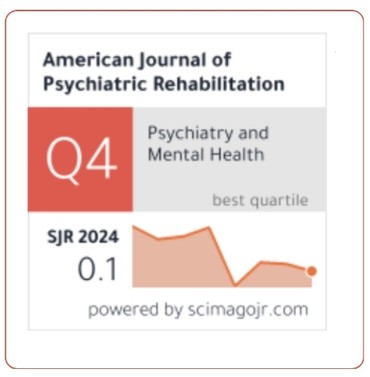Understanding The Offender: Behavioral Evidence Analysis In Forensic Interrogation – Methodologies, Emerging Trends And Applications
DOI:
https://doi.org/10.69980/ajpr.v28i5.376Keywords:
Behavioral Evidence Analysis, Forensic Interrogation Techniques, Offender Behavioral Profiling, Deception Detection Strategies, Cognitive Neuroscience in InterrogationAbstract
Understanding criminal behavior is a cornerstone of forensic investigations, and Behavioral Evidence Analysis (BEA) has emerged as a crucial tool in forensic interrogation. By combining insights from psychology, criminology, and investigative science, BEA helps law enforcement professionals assess deception, analyze cognitive patterns, and identify behavioral inconsistencies in suspects. This paper delves into the methodologies that shape BEA, highlighting its evolution from traditional interrogation techniques to modern, data-driven approaches. With advancements in artificial intelligence, neuropsychology, and biometric analysis, forensic interrogation has become more precise and evidence-based. However, while these technologies offer promising results, ethical concerns surrounding coercion, psychological manipulation, and legal admissibility remain at the forefront. This study explores the impact of BEA across various domains, including criminal investigations, counterterrorism, corporate fraud, and cybercrime. We assess BEA’s effectiveness in differentiating between truthfulness and deception by analyzing real-world case studies and recent research. Finally, we examine future directions, particularly the integration of AI-driven behavioral analysis and neuroscience, which may redefine the landscape of forensic interrogation.
References
Books and Book Chapters:
1. Gudjonsson, G. H. (2003). The Psychology of Interrogations and Confessions: A Handbook. John Wiley & Sons. ISBN: 978-0470844618.
2. Gudjonsson, G. H. (2018). The Psychology of False Confessions: Forty Years of Science and Practice. John Wiley & Sons. ISBN: 978-1119315676.
3. Kassin, S. M., Fein, S., & Markus, H. R. (2024). Social Psychology (12th ed.). Sage Publications. ISBN: 978-1071851805.
4. Kassin, S. M. (2022). Duped: Why Innocent People Confess – and Why We Believe Their Confessions. Prometheus Books. ISBN: 978-1633888098.
5. Leo, R. A. (2008). Police Interrogation and American Justice. Harvard University Press.ISBN: 978-0674035317.
6. Lassiter, G. D. (Ed.). (2004). Interrogations, Confessions, and Entrapment. Springer. ISBN: 978-0387385982.
7. Vrij, A. (2008). Detecting Lies and Deceit: Pitfalls and Opportunities (2nd ed.). John Wiley & Sons. ISBN: 978-0470516256.
8. Granhag, P. A., & Stromwall, L. A. (Eds.). (2004). The Detection of Deception in Forensic Contexts. Cambridge University Press. ISBN: 978-0521541569.
9. Davis, D., & Leo, R. A. (2012). Interrogation-Related Regulatory Decline: Ego Depletion, Failures of Self-Regulation, and the Decision to Confess. In M. L. Alberts, & K. D. Vohs (Eds.), Handbook of Self-Regulation: Research, Theory, and Applications (2nd ed., pp. 211-228). Guilford Press. ISBN: 978-1462509510.
10. Wrightsman, L. S., & Kassin, S. M. (1993). Confession Evidence. In The Psychology of Evidence and Trial Procedure (pp. 67-94). Sage Publications. ISBN: 978-0803939740.
Journals & Articles:
11. Kassin, S. M., & Kiechel, K. L. (1996). The Social Psychology of False Confessions: Compliance, Internalization, and Confabulation. Psychological Science, 7(3), 125-128. https://doi.org/10.11 11/j.1467-9280.1996.tb00344.x
12. Kassin, S. M., Drizin, S. A., Grisso, T., Gudjonsson, G. H., Leo, R. A., & Redlich, A. D. (2010). Police-Induced Confessions: Risk Factors and Recommendations. Law and Human Behavior, 34(1), 3-38. https://doi.org/10.1007/s10979-009-9188-6
13. Kassin, S. M., Goldstein, C. C., & Savitsky, K. (2003). Behavioral Confirmation in the Interrogation Room: On the Dangers of Presuming Guilt. Law and Human Behavior, 27(2), 187-203. https://doi.org/10.1023/A:1022599230598
14. Kassin, S. M. (2005). On the Psychology of Confessions: Does Innocence Put Innocents at Risk? American Psychologist, 60(3), 215-228. https://doi.org/10.1037/0003-066X.60.3.215
15. Perillo, J. T., & Kassin, S. M. (2011). Inside Interrogation: The Lie, the Bluff, and False Confessions. Law and Human Behavior, 35(4), 327-337. https://doi.org/10.1007/s10979-010-9244-2
16. Kassin, S. M., Dror, I. E., & Kukucka, J. (2013). The Forensic Confirmation Bias: Problems, Perspectives, and Proposed Solutions. Journal of Applied Research in Memory and Cognition, 2(1), 42-52. https://doi.org/10.1016/j.jarmac.2013.01.001
17. Kassin, S. M. (2012). Why Confessions Trump Innocence. American Psychologist, 67(6), 431-445. https://doi.org/10.1037/a0028212
18. Appleby, S. C., & Kassin, S. M. (2016). When Self-Report Trumps Science: Effects of Confessions, DNA, and Prosecutorial Theories on Perceptions of Guilt. Psychology, Public Policy, and Law, 22(2), 127-140. https://doi.org/10.1037/law0000080
19. Kassin, S. M., Redlich, A. D., Alceste, F., & Luke, T. J. (2018). On the General Acceptance of Confessions Research: Opinions of the Scientific Community. American Psychologist, 73(1), 63-80. https://doi.org/10.1037/amp0000141
Websites:
20. Brain Electrical Oscillation Signature Profiling (BEOSP)
Wikipedia.
An overview of BEOSP, a technique used to detect a suspect's participation in a crime by analyzing electrophysiological impulses.https://www.wikipedia.org/
21. Saul Kassin Case Report
Wikipedia. Certainly, here are some reputable websites that provide valuable information on Behavioral Evidence Analysis and forensic interrogation:
1. Brain Electrical Oscillation Signature Profiling (BEOSP) – Wikipedia An overview of BEOSP, a technique used to detect a suspect's participation in a crime by analyzing electrophysiological impulses.
2. Saul Kassin – Wikipedia A comprehensive profile of Dr. Saul Kassin, a prominent psychologist known for his research on false confessions and interrogation techniques.
3. Dr. Ann Burgess: The Forensic Nurse Who Inspired 'Mindhunter' FBI Technique - The Sun
An article detailing the contributions of Dr. Ann Burgess to criminal profiling and her collaboration with the FBI's Behavioral Science Unit.
4. 'It was me, sir': Expert Unpacks Bloodied Killer's Confession - The AdvertiserAn analysis by forensic psychologist Tim Watson-Munro on videotaped confessions and the behavior of offenders during police interviews.
5. My Last Trial - The AtlanticAmanda Knox reflects on her legal ordeal, highlighting issues related to false confessions and interrogation practices.
These sources offer diverse perspectives on forensic interrogation techniques, case studies, and expert analyses related to Behavioral Evidence Analysis.
A comprehensive profile of Dr. Saul Kassin, a prominent psychologist known for his research on false confessions and interrogation techniques.https://www.wikipedia.org
22. Dr. Ann Burgess: The Forensic Nurse Who Inspired 'Mindhunter' FBI Technique
The Sun.
An article detailing the contributions of Dr. Ann Burgess to criminal profiling and her collaboration with the FBI's Behavioral Science Unit.https://www.thesun.co.uk/
23. 'It was me, sir': Expert Unpacks Bloodied Killer's Confession
The Advertiser.
An analysis by forensic psychologist Tim Watson-Munro on videotaped confessions and the behavior of offenders during police interviews.https://www.adelaidenow.com.au/
24. My Last Trial The Atlantic.
Amanda Knox reflects on her legal ordeal, highlighting issues related to false confessions and interrogation practices.https://www.theatlantic.com/
Downloads
Published
Issue
Section
License
Copyright (c) 2025 American Journal of Psychiatric Rehabilitation

This work is licensed under a Creative Commons Attribution 4.0 International License.
This is an Open Access article distributed under the terms of the Creative Commons Attribution 4.0 International License permitting all use, distribution, and reproduction in any medium, provided the work is properly cited.









